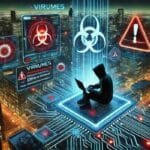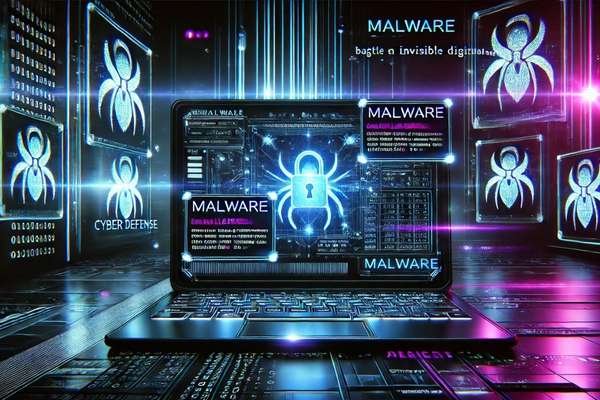
How to Remove Malware with Easy-to-Follow Methods
November 13, 2024
Protect Your Privacy with These Malware Solutions
November 13, 2024
How to Remove Malware from Your PC:
Malware is a significant threat to personal data and device performance, affecting everyone from casual users to digital marketing professionals, developers, and content creators. Knowing how to remove malware from your PC is essential for keeping your system safe and maintaining productivity. In this step-by-step guide, we’ll walk through the best practices and tools to eliminate malware effectively.
Table of Contents
1. Understanding Malware and Its Impact on Your PC
What is Malware?
Malware, short for “malicious software,” encompasses various harmful programs like viruses, spyware, ransomware, and adware. Each type is designed to infiltrate, damage, or disrupt systems, often compromising data security in the process.
The Cost of Malware
For professionals, malware can lead to data theft, system crashes, or compromised client data. According to recent studies, the average data breach costs businesses over $4 million, making proactive malware management a critical part of digital security.
2. Recognizing Signs of Malware on Your PC
2.1 Slow System Performance
A sluggish computer is often one of the first signs of malware. Malware consumes system resources, slowing down applications, boot times, and overall responsiveness.
2.2 Unexpected Pop-Ups
Pop-ups and strange ads appearing without user input are common indicators of malware, especially adware. These unwanted ads may also lead to further infections if clicked.
2.3 Changes to Homepage and Browser Settings
If your homepage or browser settings have changed without permission, it’s likely due to malware. Browser hijackers modify settings to redirect searches and web traffic for ad revenue.
2.4 Unknown Programs and Files
Malware often installs unknown programs or creates suspicious files. Checking for new or unrecognized software can help identify potential threats.
2.5 Frequent Crashes and Error Messages
Unexpected crashes and frequent error messages may indicate malware is damaging critical system files. Addressing these issues quickly is essential to prevent further harm.
3. Step-by-Step Guide to Remove Malware from Your PC
3.1 Step 1: Disconnect from the Internet
Disconnecting from the internet prevents malware from communicating with its source or spreading further. This step is particularly crucial for stopping data-stealing malware.
3.2 Step 2: Enter Safe Mode
Safe Mode limits your system to essential files and drivers, preventing most malware from loading. To enter Safe Mode:
- Restart your PC.
- During the boot process, press F8 (or another key specific to your system) to open the advanced boot menu.
- Select “Safe Mode with Networking.”
3.3 Step 3: Delete Temporary Files
Deleting temporary files can help remove certain types of malware and improve scan efficiency. To do this:
- Open “Disk Cleanup” from the Start menu.
- Select the drive to clean and check “Temporary Files.”
- Click “OK” to delete.
3.4 Step 4: Use a Malware Scanner
- Free Tools: Tools like Malwarebytes Free provide effective scanning for basic threats.
- Premium Tools: Consider Malwarebytes Premium or Bitdefender Total Security for advanced protection, including real-time monitoring and ransomware prevention.
3.5 Step 5: Run a Full Malware Scan
After selecting your malware removal tool, run a full system scan. A complete scan is more thorough than a quick scan and will detect malware in less obvious places.
3.6 Step 6: Review and Quarantine or Delete Infected Files
Most malware scanners will give you options to quarantine or delete infected files. Quarantining allows for safe isolation, while deleting removes the malware entirely. Review scan results carefully to ensure no critical system files are affected.
3.7 Step 7: Remove Suspicious Browser Extensions
Many malware infections affect browsers, adding extensions that track data or redirect searches. To remove these:
- Open your browser’s settings.
- Go to the “Extensions” or “Add-ons” section.
- Delete any unknown or suspicious extensions.
3.8 Step 8: Clear Browser Cache and Cookies
Clearing your browser cache and cookies can help remove remnants of adware and other tracking malware. This step improves your browser’s security and performance.
3.9 Step 9: Update Operating System and Software
Updating your operating system and applications ensures your PC has the latest security patches. Outdated software is more vulnerable to malware attacks.
3.10 Step 10: Restart and Reconnect to the Internet
After completing the above steps, restart your PC and reconnect to the internet. Check system performance and settings to confirm that the malware has been removed.
4. Preventing Future Malware Infections
4.1 Install a Reputable Malware Removal Tool
Using a quality malware removal tool with real-time protection is essential for long-term security. Consider premium solutions like Norton 360 or Bitdefender, which offer multi-device plans and advanced features.
4.2 Enable Firewall Protection
Firewalls prevent unauthorized access to your PC. Make sure your system firewall is enabled or consider third-party options with enhanced protection.
4.3 Avoid Downloading Suspicious Files and Links
Exercise caution when downloading files, especially from unknown sources. Malware is often disguised as legitimate files, making it essential to verify before downloading.
4.4 Regularly Update Software and Operating System
Keeping software up-to-date ensures your PC has the latest security patches. Enable automatic updates where possible to simplify this process.
5. Additional Tips for Maintaining a Malware-Free PC
5.1 Use Strong, Unique Passwords
Ensure your passwords are unique and complex to protect online accounts from breaches. Password managers like LastPass or 1Password can help manage and generate secure passwords, adding an extra layer of protection.
5.2 Enable Two-Factor Authentication (2FA)
2FA provides an additional security step by requiring a second form of identification beyond your password. This is particularly useful for securing sensitive accounts against unauthorized access, even if your PC becomes infected.
5.3 Regular Data Backups
Regularly backing up your data ensures you have a secure copy in case of a malware attack. Options like Google Drive, Dropbox, or external hard drives make it easy to restore files if necessary.
5.4 Educate Yourself and Others
Malware is often spread through common traps like phishing emails or malicious downloads. Knowing what to look for, such as misspelled URLs or suspicious attachments, can help avoid infections. Sharing these practices with colleagues or family members can further enhance digital security.
How to Remove Malware from Your PC Recap
| Tool | Key Features | Official Link |
|---|---|---|
| Malwarebytes Premium |
Ideal for deep-cleaning infected systems. | Visit Malwarebytes |
| Norton 360 |
Comprehensive suite for all-around security. | Visit Norton |
| Bitdefender Total Security |
High detection rates with low resource usage. | Visit Bitdefender |
| Kaspersky Internet Security |
Trusted protection with user-friendly controls. | Visit Kaspersky |
| McAfee Total Protection |
Ideal for users managing multiple devices. | Visit McAfee |
Frequently Asked Questions
Is Safe Mode enough to remove all malware?
No, Safe Mode is useful for preventing malware from running, but it does not remove malware. Use Safe Mode to isolate malware, then run a reliable malware scanner to remove infections.
Can free malware removal tools fully protect my PC?
Free tools provide basic protection but may not offer real-time scanning or advanced features. For comprehensive protection, consider premium tools like Malwarebytes Premium or Norton 360.
How often should I run a malware scan?
Running a full malware scan at least once a week is recommended, especially for professionals who frequently download files or access various websites.
Conclusion
In today’s digital landscape, knowing how to remove malware from your PC is essential for anyone who relies on their computer for personal or professional tasks. This step-by-step guide provides a comprehensive approach, from detecting signs of malware to eliminating threats and reinforcing your system against future attacks. By using reputable malware removal tools like Malwarebytes Premium, Norton 360, or Bitdefender Total Security, you can ensure a higher level of protection.
Following these practices can help you stay ahead of cyber threats, protect personal data, and maintain optimal system performance. With the right tools and proactive habits, you can create a safe and secure online experience for your professional and personal endeavors.








